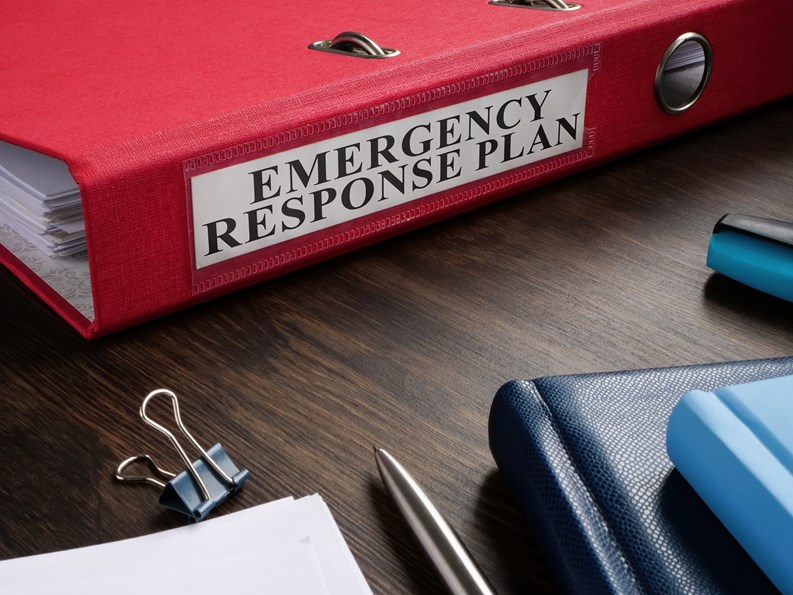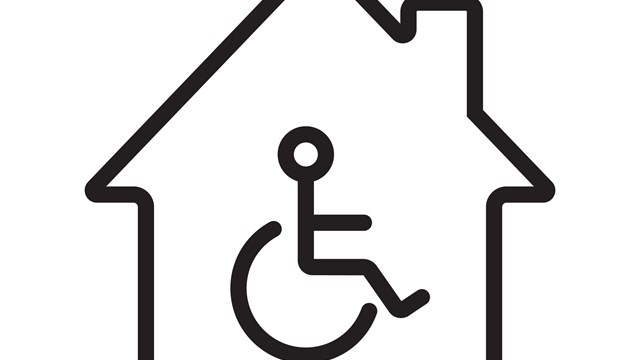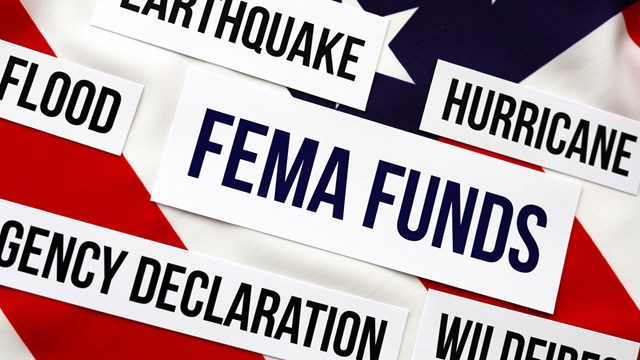Emergencies in multifamily communities can take on many forms. High-rises and sprawling developments alike can be impacted by big crises, such as fires or hurricanes, as well as smaller challenges, such as a broken pipe or a fallen tree limb.
Large or small, all must be taken seriously. It’s up to boards and managers to deal with crises when they arise, and that means preparing ahead of time to be ready for whatever comes their way.
Brad Grayson, senior community manager at PRG Management, based in Chicago, manages a portfolio of many buildings, ranging in both age and size, from 6 units to 120, so he notes that handling emergencies is different at each place. After all, some have on-site maintenance staff that can assist, while others will need to call Grayson to send a qualified agent to the site in the event of a crisis.
“We get emergency calls frequently that are not emergencies, so we need to determine what the actual issue is,” he says. “Basically, we tell residents to call 911 for any serious emergency, then to call us with any sort of homeowner issue.”
What’s the Plan?
Eric Staszczak, executive vice president for property management with Westward360, a Chicago-based management firm, says a sound multifamily emergency plan starts with having a comprehensive and holistic understanding of the given community’s liabilities.
For instance, does your building have a functional, up-to-date fire/life safety system? Are there sprinklers? Are there building systems that may be more prone to failures because of age or deferred maintenance? Are you in a location prone to flood, drought conditions, or other inclement weather? Treating each community as the unique entity it is matters, he says. “For instance, for our communities in Denver, hail damage is much more of a concern compared to our Illinois communities,” and their emergency response strategies reflect that reality.
In addition to accounting for specific local and regional concerns, all emergency plans should include a clear, detailed site map with evacuation diagrams and routes, and boards and managers should maintain an up-to-date resident roster with phone and email information for every unit, as well as emergency contacts—both for residents and for local, state, and even federal resources.
“Whether you have high resident turnover or not, people’s contact information changes,” Staszczak says. “It’s important to periodically perform a community census to update emergency contacts, phone numbers, preferred email addresses, and tenancy changes.”
There should also be regular, thorough testing of emergency lighting, fire and life safety systems, extinguishers, and emergency elevator call buttons built into your maintenance calendar, with accountability required from staff to ensure inspections and testing get done and any irregularities or maintenance needs get addressed immediately once discovered.
“Transparency is also important,” Staszczak says, “making sure residents have the contact information appropriate for each sort of emergency at their fingertips. We compile and maintain a list of contacts for each sort of event—including emergency and non-emergency information for first responders—and make it clear under which circumstances residents should be contacting those higher authorities rather than the management emergency line. Despite common sense, we do encounter life safety issues where residents send an email or make a call to our emergency line, where they should be contacting the police or fire department.”
Calling for Reinforcements
Just as vital as planning and communication is being aware of local and state regulations, statutes, and procedures in the event of a crisis.
“Does your municipality have policies and procedures that your community must abide by?” asks Staszczak. “If your management company operates in multiple municipalities or states, there’s more that you need to ensure you understand—because from state to state, county to county, village to village, those [contacts and protocols] can vary in important ways.”
Major Emergencies
While Westward360 doesn’t deal with hurricanes in the Midwest, they certainly get some nasty storms that often produce torrential rain and extremely high winds.
“Those storms fortunately don’t often come without a bit of notice from the forecast,” Staszczak says, “so we’re usually in a position to take a proactive action. Get a memo out to your residents notifying of the pending weather, its projected timing, and its possible effects. Letting everyone know they need to secure or move items stored outdoors, close windows, and stay alert is key.”
He adds that when sent via text, email, or other electronic means, those notifications can link to the professional resources like the National Weather Service real time reports, phone numbers for the utility companies and links to their outage map webpages, and reminders to report to management any instance of property damage affecting residents, as well as the community’s common elements.
While fires rarely allow for much in the way of proactive work, there are steps that make that unfortunate reality less chaotic when it does happen.
“Ensure that your fire safety systems are functioning with routine maintenance and regulatory testing,” Staszczak says. “Be proactive in finding out who among your residents may be compromised in getting safely out of the building. People with disabilities, the elderly, and families with young children may need priority assistance from first responders—or even management at times. In an elevator building, this is extremely important.”
Hanging post-evacuation site maps around the building and its exterior so residents know where they need to go in the event their primary exit is inaccessible is also necessary.
In the event of a fire, PRG Management always immediately instructs people to call 911. “As far as preparedness, we have fire extinguishers that are checked on yearly, and fire safety inspections by a professional licensed fire safety vendor,” Grayson says.
“A few years ago, one of the buildings I manage had a fire in the elevator room,” Grayson continues. “I got the fire department out right away when someone called in complaining the smoke detector was going off. After the fire was put out, the elevator repair company got right out and shut down the elevator, identified the problem, and quoted for repair. Unfortunately the actual elevator repair took several weeks, but we have not had any issues since. No one was harmed, and quick action kept damage to a minimum.”
Non-Life Threatening Emergencies
For something like a broken pipe, PRG Management will call for an immediate water shutoff and get a licensed vendor in there to determine the nature and extent of the repair.
“They will do what they need to in order to get the immediate issue settled down, then discuss with the board on how to go about preventing the issue from happening again,” Grayson says. “We do routine plumbing work and landscaping that should be able to prevent these things, along with other preventative maintenance, but you can’t control emergencies.”
When a smaller emergency arises, Staszczak notes that first and foremost, management must inform the board and residents that management is aware of the situation and is acting to resolve it.
“Reports coming in about a situation without management acknowledging they’re aware of it and assessing next steps creates distrust, confusion, and lack of direction,” Staszczak says. “Further, these are also instances where management’s physical presence is an additional touch that relays to residents and the board alike that you are in control of the situation. You can engage with concerned stakeholders while onsite, completely assess what is needed, and quarterback the situation with less stress” than trying to orchestrate a response from afar, he notes.
For instances like these, it’s also key for management to have a short list of approved emergency plumbing, remediation, and handyperson contacts that will give the community or manager priority.
“You’ve got to communicate to residents and the board that these contacts exist so that they are assured that there is contingency in place,” Staszczak says. “Understand that the response may require multiple trades. A pipe break may seem like a plumbing issue, but it’s also a general infrastructure issue. Walls may need to be opened and later repaired. Remediation vendors with access to air movers, dehumidifiers, and sanitary cleaning products may be necessary.”
Recently, a building Staszczak’s firm manages in the Buena Park neighborhood was severely impacted by sewer backup resulting from a long derecho storm. The city sewers were overwhelmed, and the six garden units at the building took on a foot of water from multiple drain backups and nearby flood waters mixing in with the backup waters.
“We came out during the storm event after business hours within one hour of reports coming in to review conditions onsite and visit each unit, and en route, we dispatched SERVPRO for earliest mitigation possible,” Staszczak says. “SERVPRO arrived one hour later to begin mitigation, waiting for city sewers to naturally catch up and pumping water from the ground level away from and out of the units affected. In the meantime, a claim was filed with the association’s agent that evening given the damage to drywall and subflooring, and an adjuster arranged for a visit within 48 hours.”
The board was not well versed in the division of responsibilities, and neither were homeowners, given that the association had not had a water emergency to this degree, so the company spent time onsite during the most stressful parts of the incident to sit down with owners and the board, explain how the governing documents and the Illinois Condominium Property Act dictate where responsibilities lie, whose policies are primary, and what steps they would need to take to ensure they could be made whole.
“This helped keep everyone who was affected calm, reassured them they had a hands-on team handling the situation, and set expectations for the rest of the days and weeks ahead,” Staszczak says.
Running Drills
Staszczak notes that drills are more common in high-unit-count high-rise structures. “For [those] communities, one of the best practices we’ve found is informing residents of what to expect,” Staszczak says. “That is, share with them what systems are in place, how they function, and what their response should be. We’ve set periodic building/property tours where residents can learn and better understand the infrastructure of their community and learn what to expect when the unexpected happens.”
It’s also important for buildings to prepare their managers, boards, and building staff for crisis management. “We work with emergency scenarios with all staff. There are often emergencies that become teaching lessons for newer employees, but guiding them through difficult situations is part of my job as the supervisor,” Grayson says.
Help Is Out There
Thankfully, there are plenty of resources to help people prepare for all types of emergencies.
“Our fire safety vendors help to teach us important steps to prevent issues, our plumbers and other vendors give us advice on how to control or reduce the possibility of an urgent situation,” Grayson says.
The Community Associations Institute’s national website is an excellent resource for emergency and disaster preparedness guidelines. Additionally, some villages, such as Morton Grove, even provide sample emergency preparedness guidelines for condominium associations.
Legal Issues
Matthew L. Moodhe, a principal with Kovitz Shifrin Nesbit, a law firm in Illinois that works with multifamily buildings, notes there is no law on the books requiring a board to have a formal emergency or disaster preparedness policy, but that doesn’t mean they shouldn’t have one anyway. “It’s our experience that most professional management companies have emergency or disaster protocols in place for their clients,” he says.
While there are not many firm requirements for emergency plans per se, there are requirements for ensuring emergency equipment is operating and maintained properly.
“While an emergency plan may not be compulsory for your community,” Staszczak says, “it will help ensure emergencies are handled with clear process and procedure and keep your residents safe and assured in their homes.”
Keith Loria is a freelance writer and contributor to CooperatorNews.










Leave a Comment